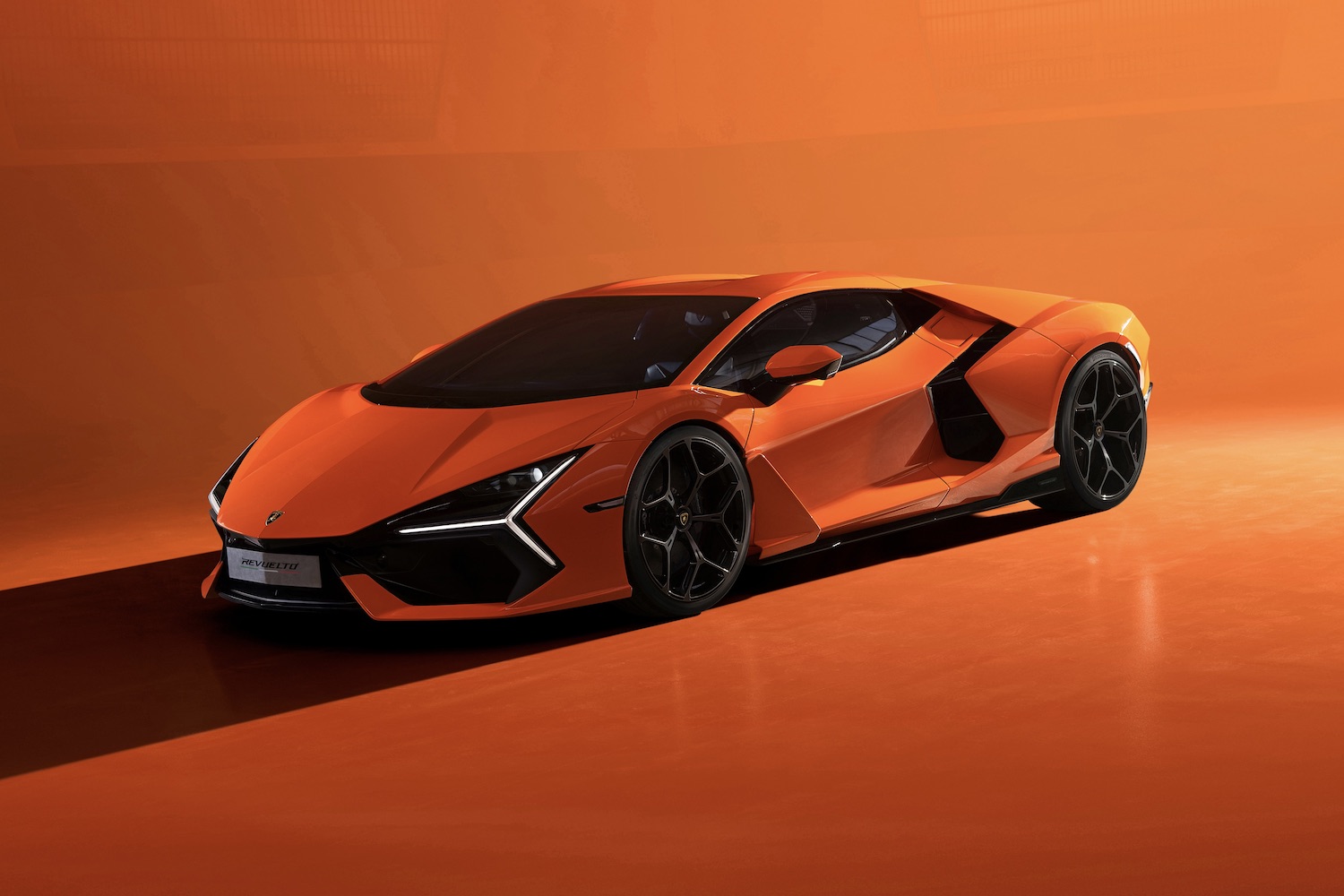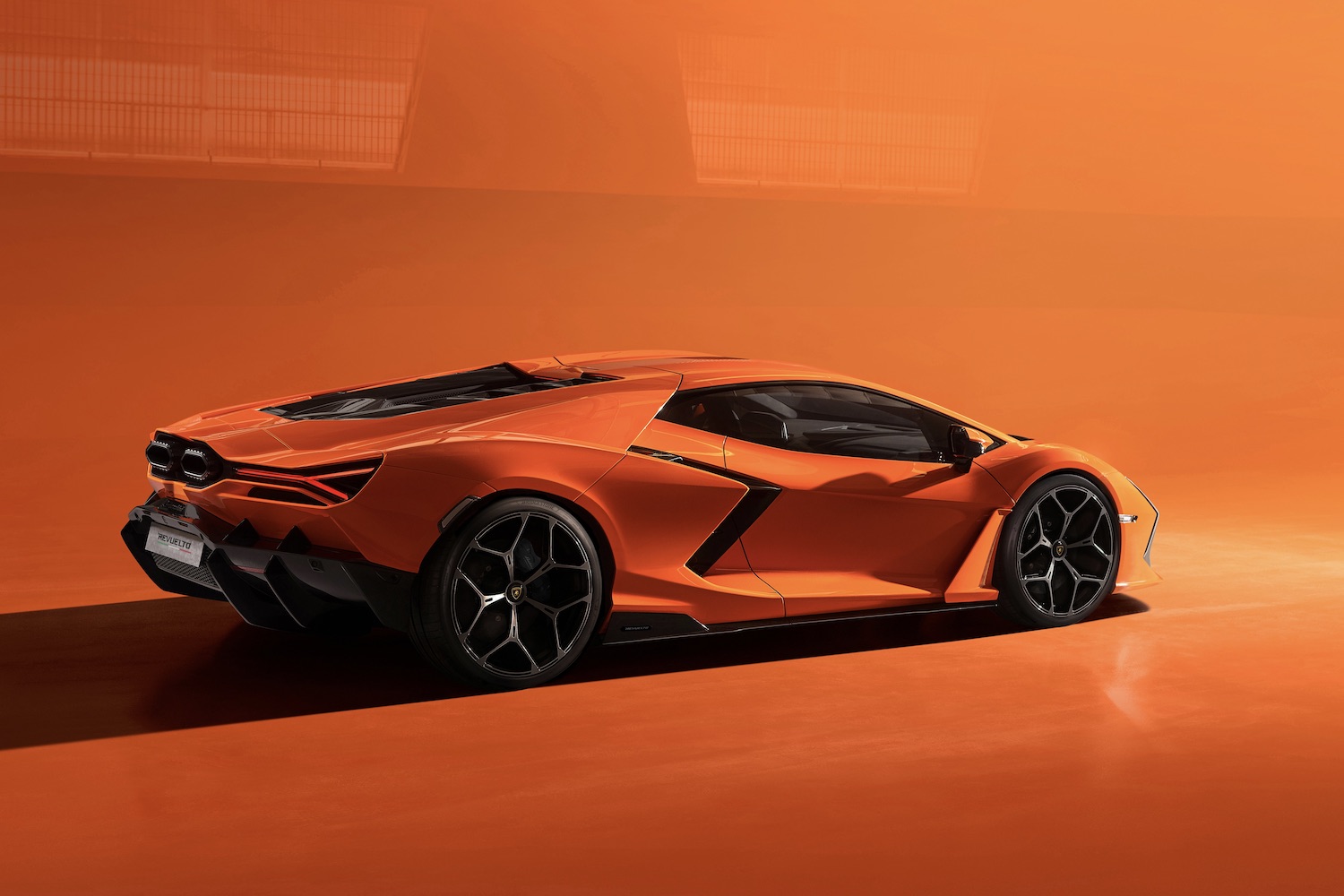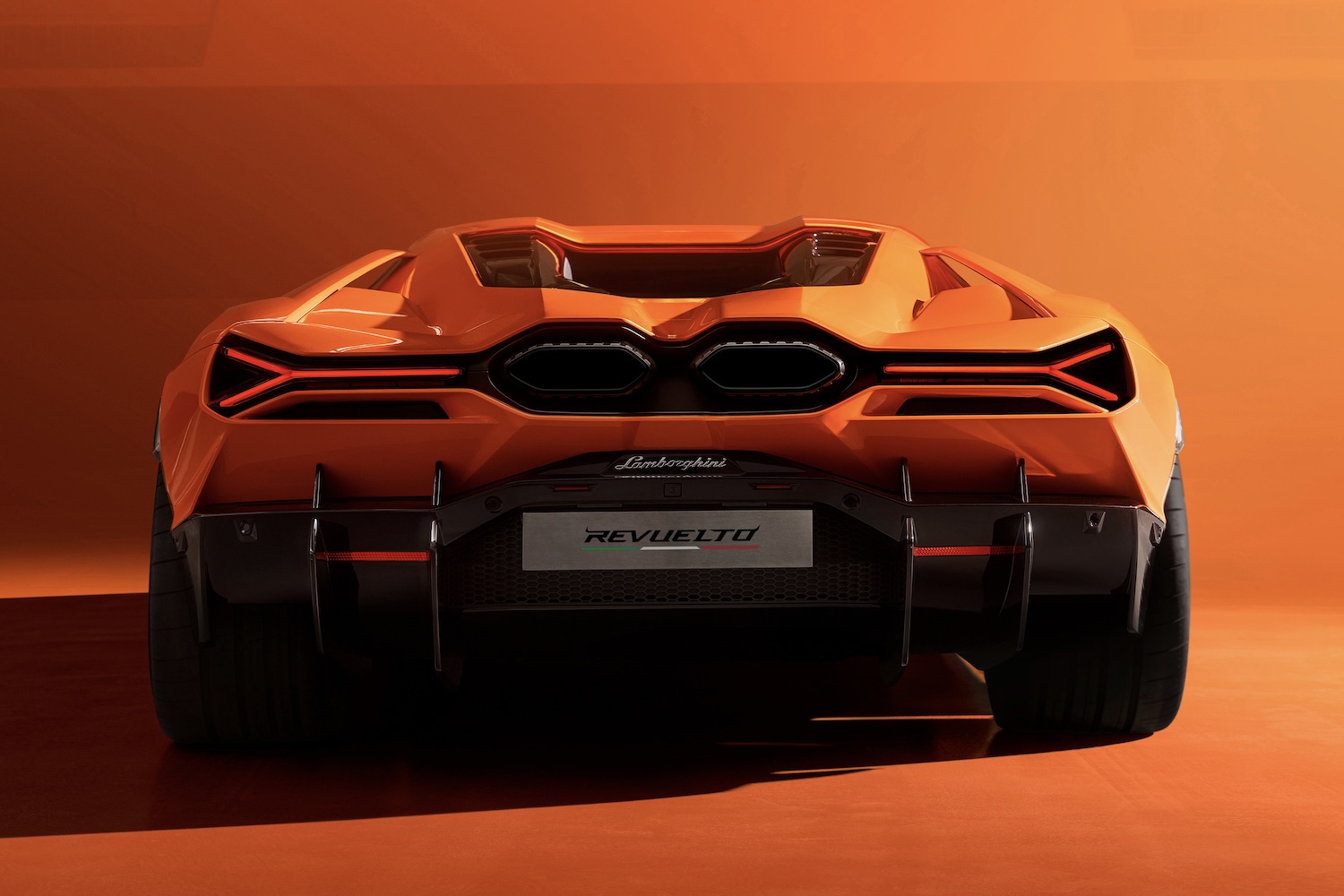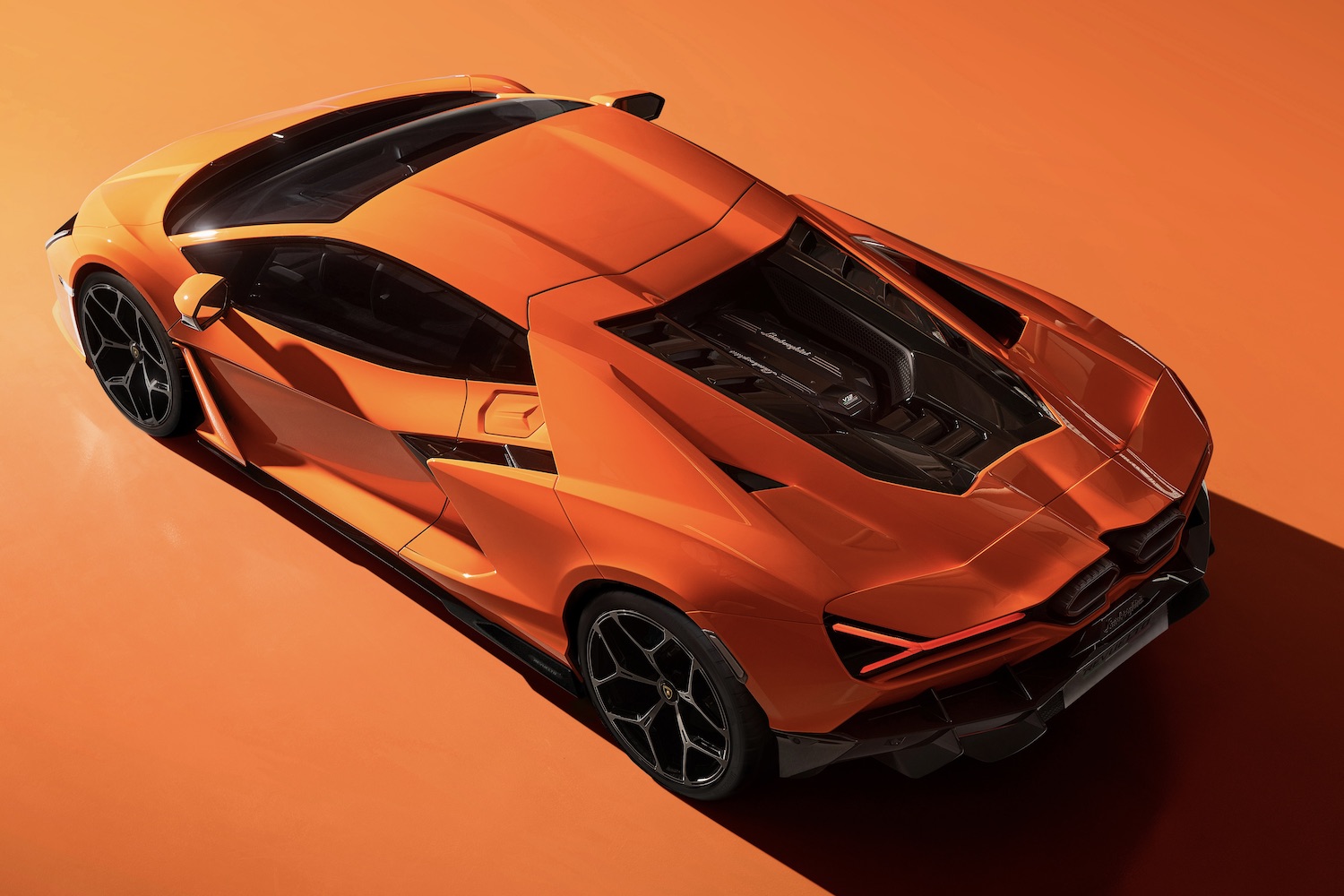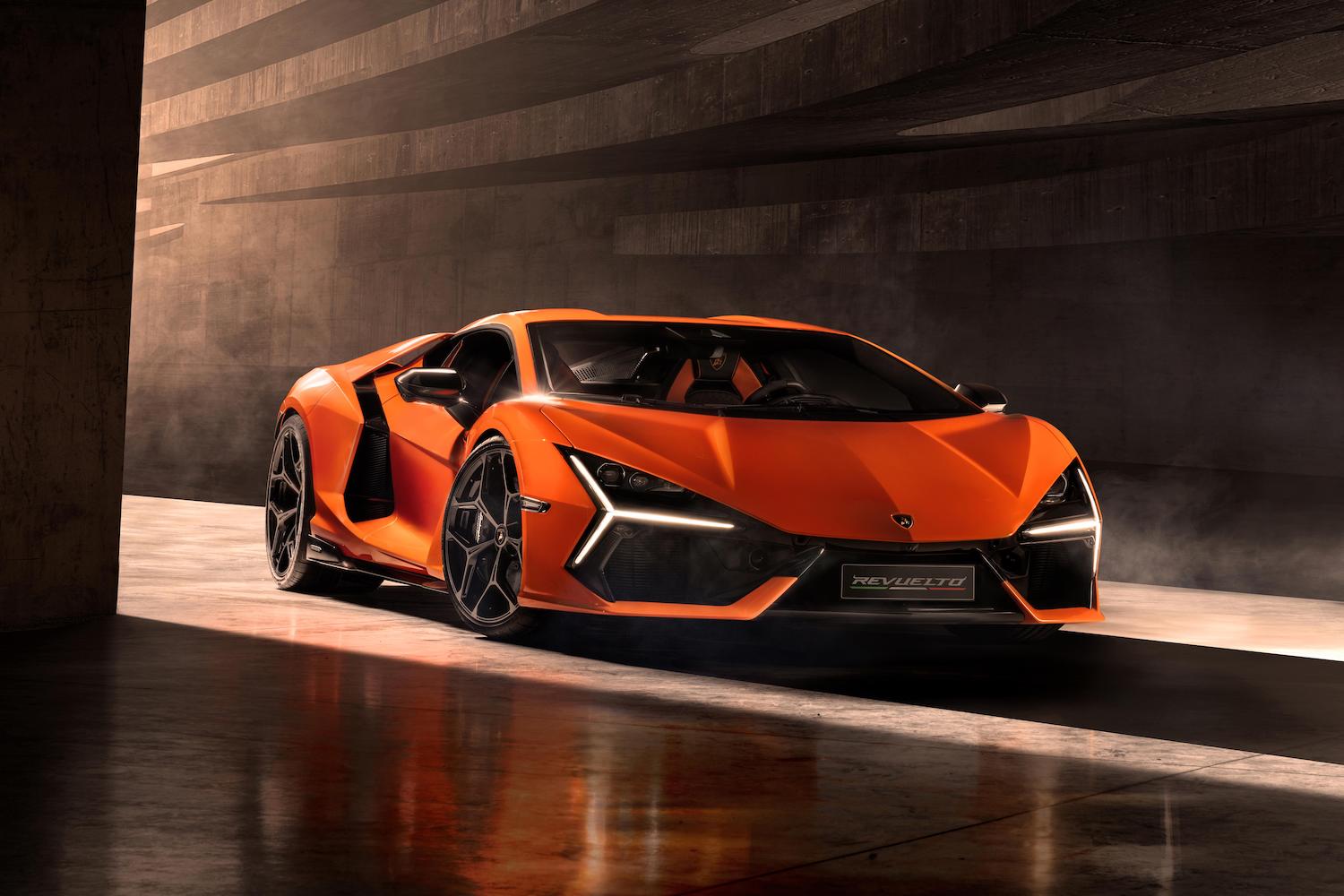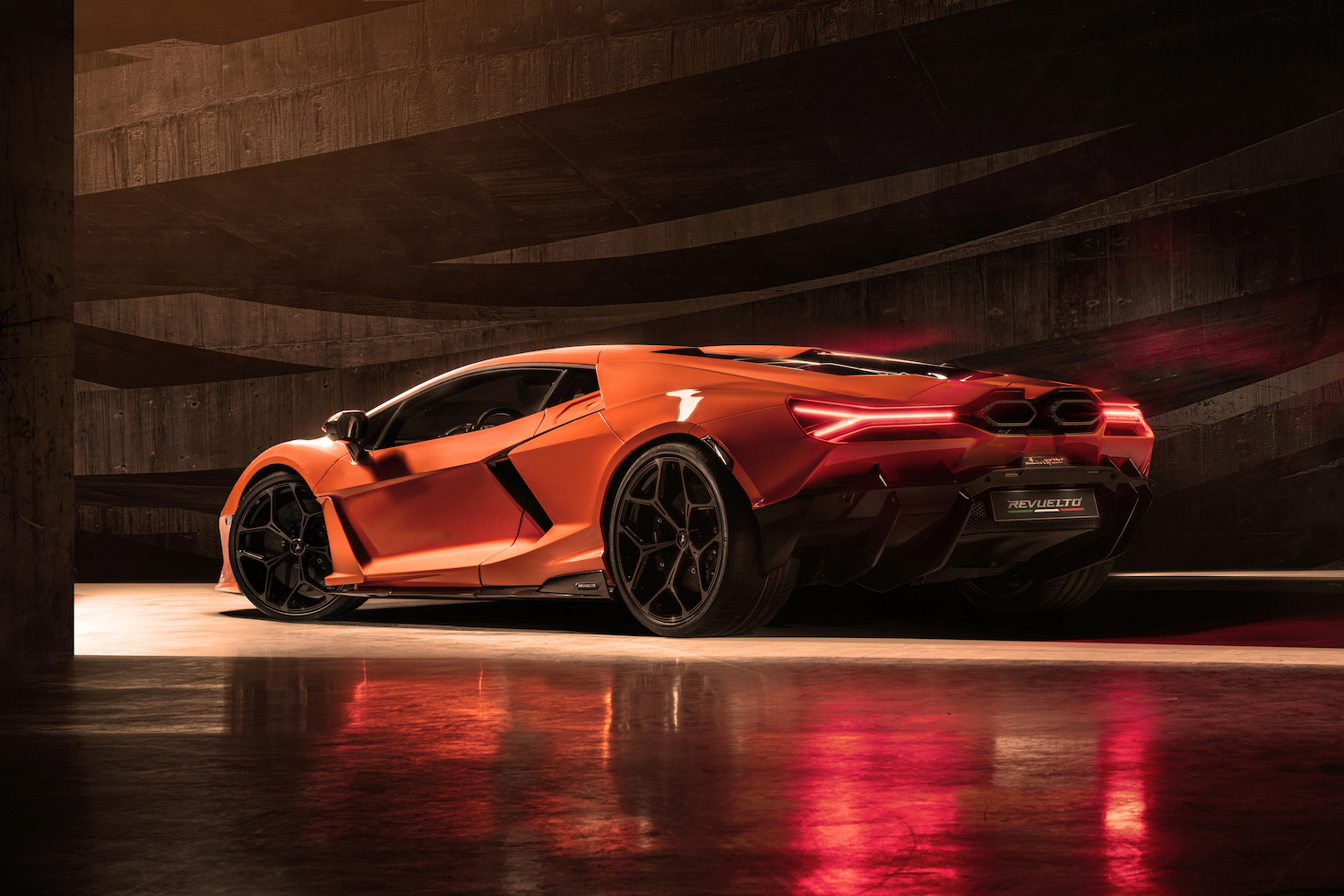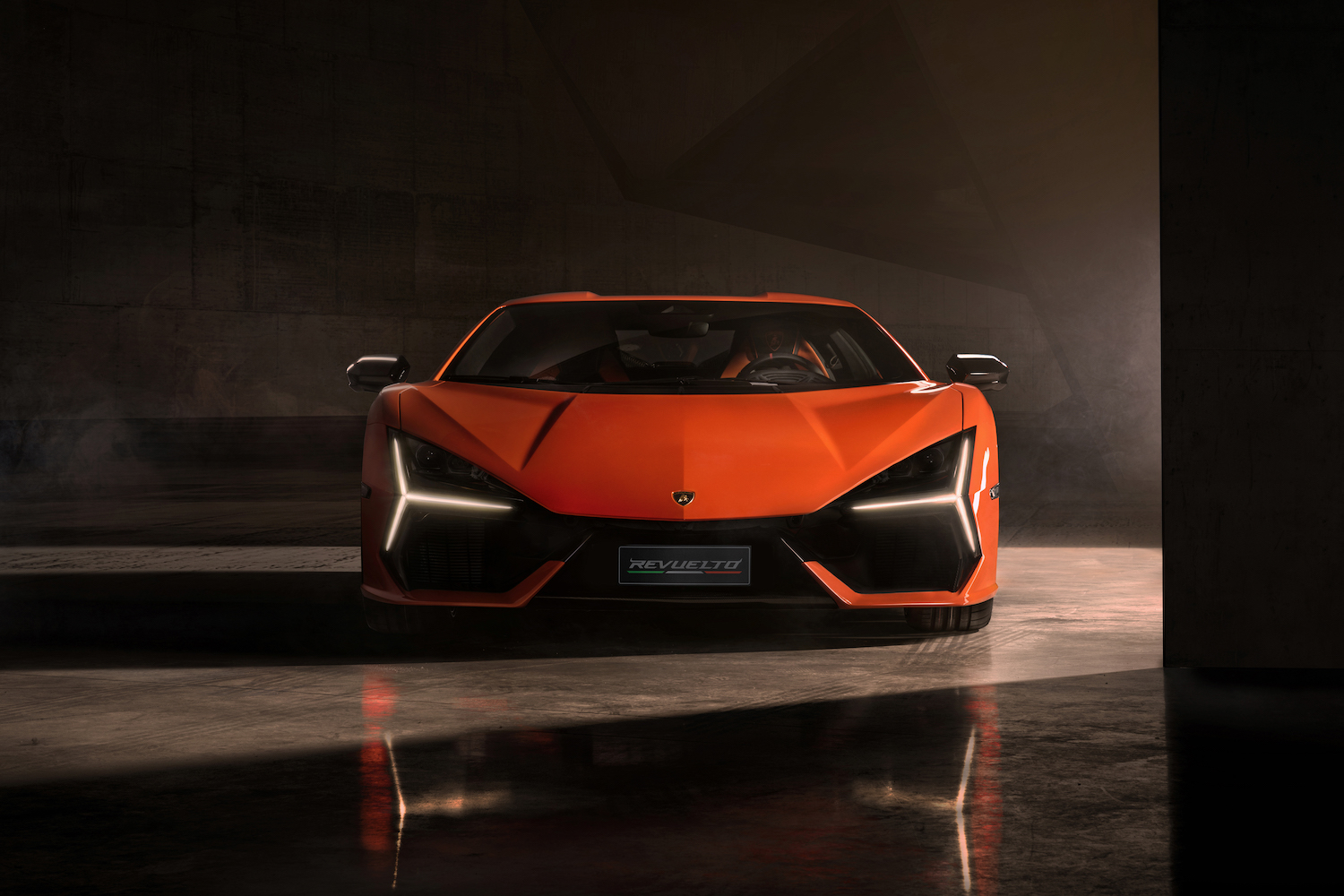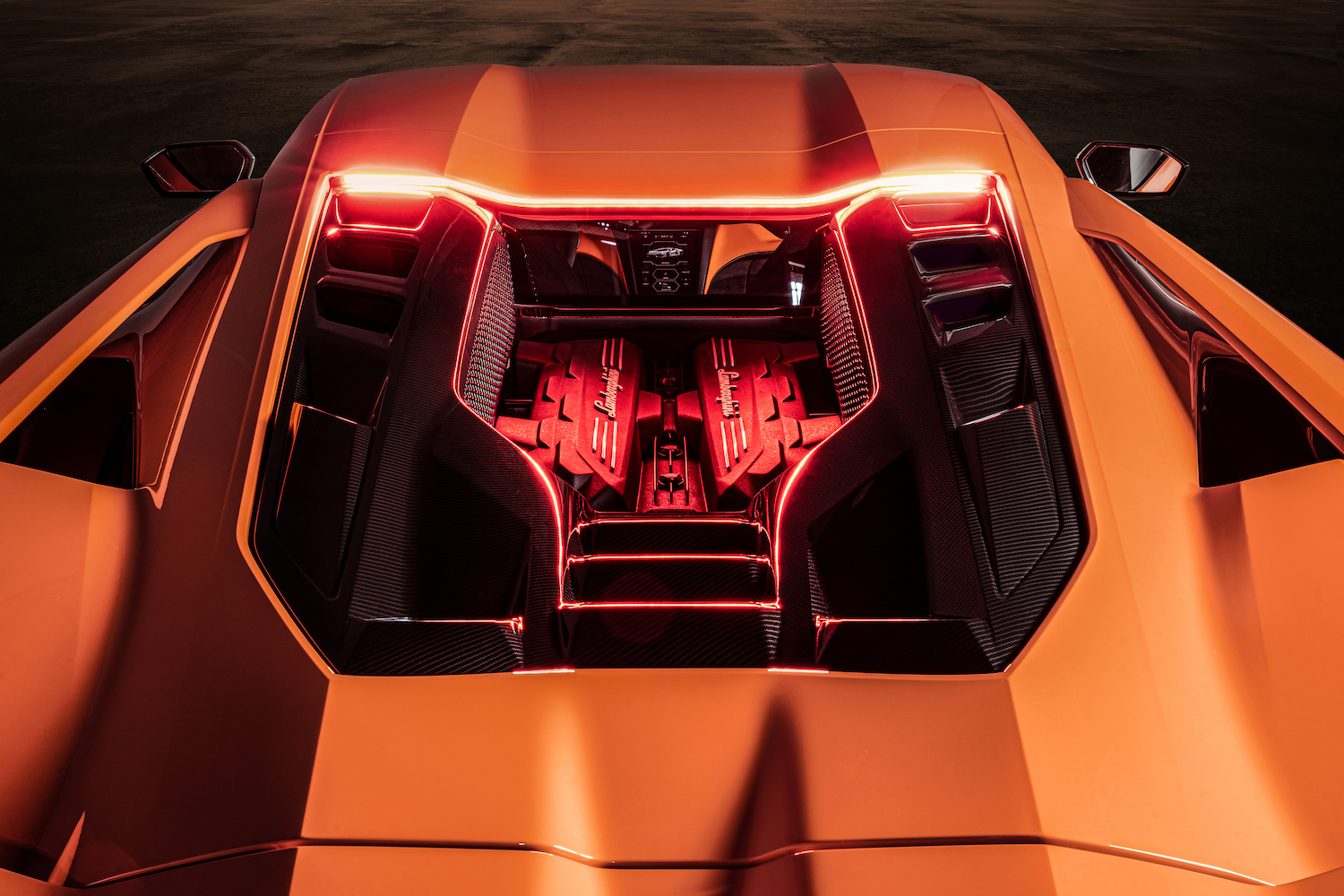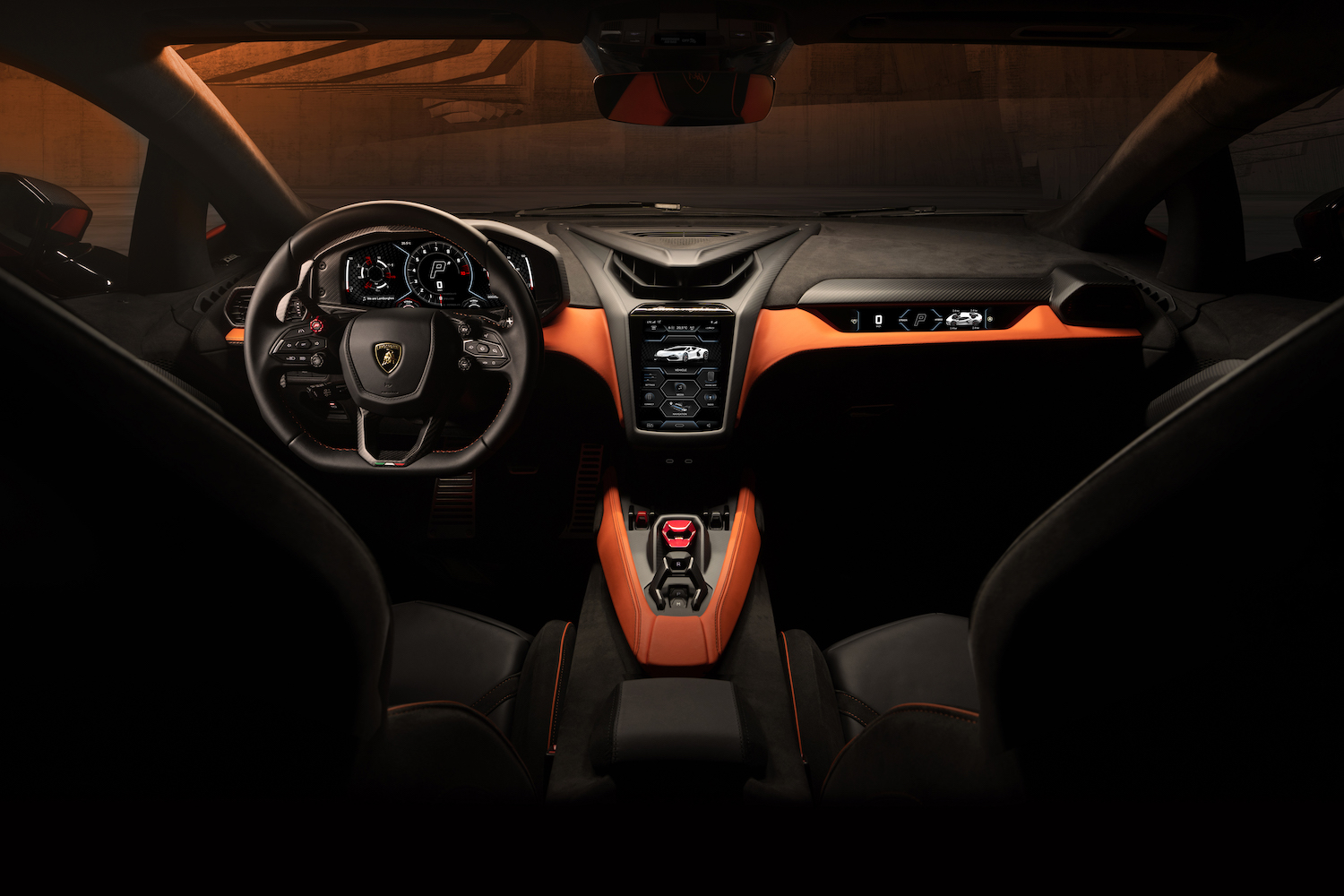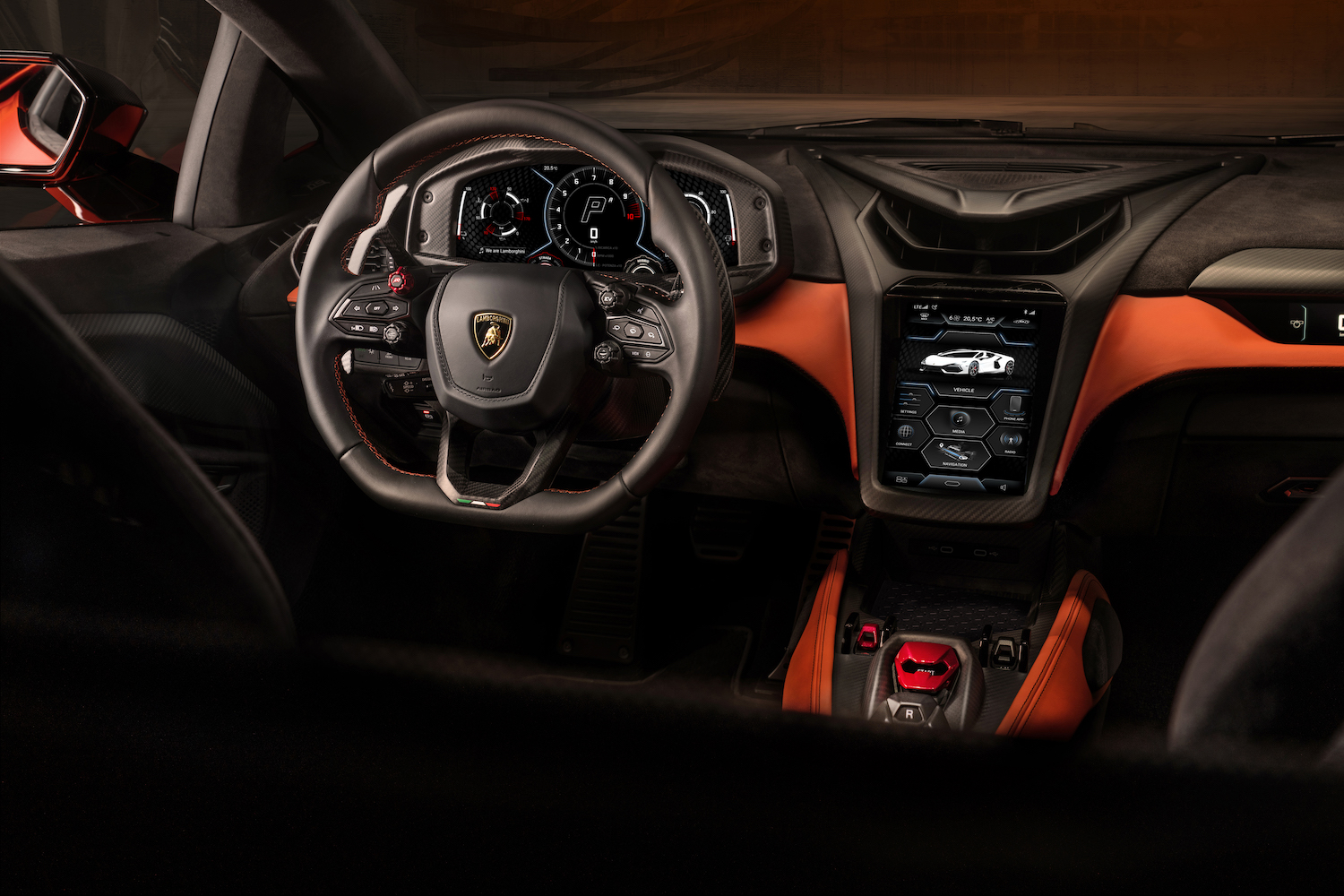Lamborghini’s V12 hypercars are legendary. The lineage includes the likes of the 350 GTV, 350 GT, 500 GT, Miura, Countach, Diablo, Murcielago, and Aventador. The latter was just discontinued after 10 model years on sale. After sharing what kind of hybrid V12 powertrain the Aventador’s replacement would have and teasing the upcoming vehicle’s carbon-fiber structure, Lamborghini is finally ready to unveil the Aventador’s successor. Say hello, everyone, to the 2024 Lamborghini Revuelto.
The Revuelto is Lamborghini’s first-ever plug-in hybrid. And what a plug-in hybrid it is. Unlike Lambos of the past, the Revuelto combines a 6.5-liter V12 engine with three electric motors for a total of 1,001 horsepower. A 3.8-kWh battery pack is also included in the mix.
Two electric motors are located on the front axle, allowing for torque vectoring under power and regenerative braking. The third electric motor is integrated into the eight-speed dual-clutch transmission. Unlike the hypercar with a prancing horse, the Ferrari SF90 Stradale, the Revuelto can route power to both the front and rear end while running on electricity.
Like other Lamborghinis, the Revuelto will come with a host of drive modes. The usual settings, including Strada, Sport, and Corsa, will be on hand, while a new Cittá is also included. The latter is an EV-only mode and is really meant for low-speed use around a city or neighborhood for 6.2 miles.
With the Revuelto in full attack mode, the hypercar will get to 60 mph from a standstill in just 2.5 seconds. Keep your foot planted until 124 mph flashes in the instrument cluster, and you’ll notice that only 7.0 seconds have gone by. That’s a staggering figure, as the Bugatti Chrion can go from zero to 124 mph in 6.5 seconds.
The hypercar promises to be lively to drive with anti-roll bars that are 11% stiffer at the front and 50% stiffer at the rear compared to the Aventador. Lamborghini has made the steering ratio 10% quicker, too. The Revuelto features new Bridgestone Potenza Sport tires that were specifically made for the hypercar that are larger than ones fitted on the Aventador, while the exotic supercar can be fitted with Bridgestone Blizzak LM005 for winter use.
Underneath the angular and wedge-shaped design, the Revuelto features a new carbon-fiber structure that’s lighter and stronger than the one found in the outgoing Aventador. Unfortunately, the electrified powertrain adds some weight back. The hypercar’s central battery pack weighs 154 pounds, the front electric motors add 81.5 pounds, and the dual-clutch transmission with the integrated electric motor weighs 425 pounds.
The Revuelto’s powertrain isn’t the only thing that’s entering the modern era. The hypercar’s cabin is now a tech center with three digital displays. A 12.3-inch digital instrument cluster is positioned in front of the driver, and a new 8.4-inch touchscreen looks like it’s floating and protruding out of the dash. The third screen is a new 9.1-inch display in front of the passenger that can be used to show just how fast the car is careening down the road.
While wealthy buyers will be impressed with the Revuelto’s tech features, they’re sure to enjoy the hypercar’s roomier cabin. Apparently, the Aventador’s tight accommodations were one of the more common complaints from owners. So, Lamborghini has fixed that. The Revuelto has more headroom and elbow. There are more storage compartments in the cabin, too.
An electrified Lamborghini is sure to be the stuff of nightmares for some diehard fans. Electrifying the brand’s historic and legendary V12 model may seem blasphemous, but no one can escape electrification – especially not Lamborghini’s parent company Volkswagen. Sneer all you want, but the Revuelto promises to be everything Lamborghini’s V12-powered cars of the past were – big, brash, expensive, and exhilarating.
